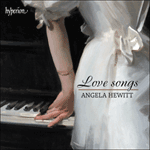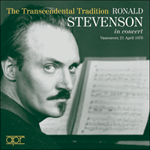
Welcome to Hyperion Records, an independent British classical label devoted to presenting high-quality recordings of music of all styles and from all periods from the twelfth century to the twenty-first.
Hyperion offers both CDs, and downloads in a number of formats. The site is also available in several languages.
Please use the dropdown buttons to set your preferred options, or use the checkbox to accept the defaults.

from notes by Barry Peter Ould © 2002
extrait des notes rédigées par Barry Peter Ould © 2002
Français: Josée Bégaud
aus dem Begleittext von Barry Peter Ould © 2002
Deutsch: Viola Scheffel
 Love songs Love songsFrom the quiet ecstasy of Strauss’s ‘Morgen’ to the ardent passion epitomized by the Adagietto of Mahler’s Symphony No 5, Angela Hewitt’s wonderful recital of transcriptions includes many of the best-known affirmations of love in the repertoire.» More |
 Rhapsody in blue - Benjamin Grosvenor plays Saint-Saëns, Ravel & Gershwin Rhapsody in blue - Benjamin Grosvenor plays Saint-Saëns, Ravel & GershwinFamed for his poetic sound and brilliantly clear touch, Benjamin Grosvenor’s debut concerto recording combines Gershwin’s 'Rhapsody in blue' (the original 1924 jazz band version) with the sparkle and wit of Ravel and Saint-Saëns, creating a progra ...» More |
 The Transcendental Tradition The Transcendental Tradition |

